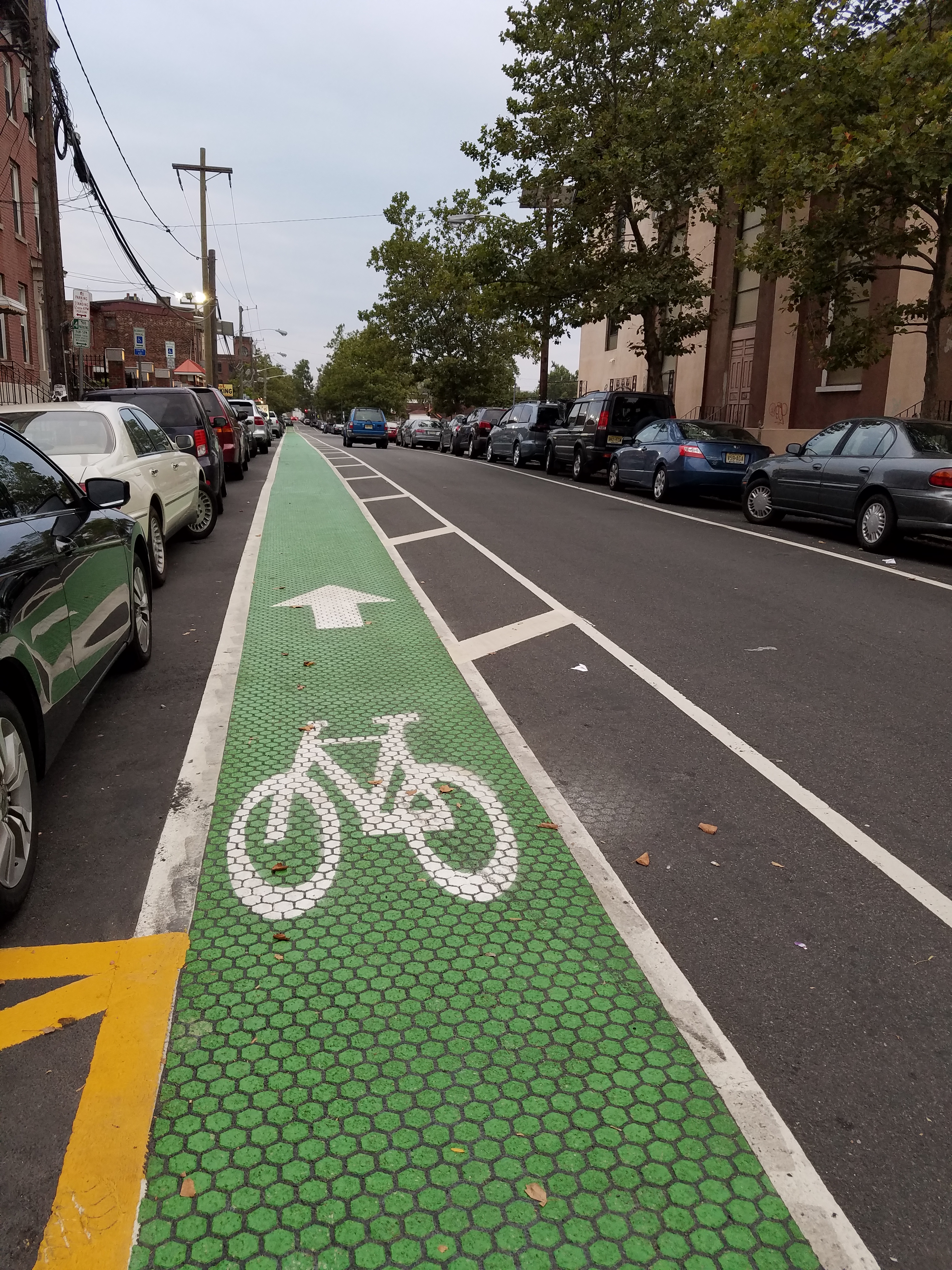Bicycle Laws
New Jersey has high rates of bicyclist injuries and fatalities according to state police data. These rates are much higher than the national average and indicate the need to improve driving behavior and road design, and to protect vulnerable road users (people on bicycle, foot, scooter, in a wheelchair, or otherwise not in a car, bus, or truck).
Laws for Bicyclists
A “bicycle” is considered to be any two wheeled vehicle having a rear drive which is solely human powered and having a seat height of 26 inches or greater when the seat is in the lowest adjustable position (NJSA 39:4-14.5).
Laws on How to be Equipped for Safe Biking
- When riding a bicycle at night, it must have (NJSA 39:4-10):
- A front white-light headlamp visible from a distance of at least 600 feet to the front.
- A rear red-light lamp visible from a distance of at least 600 feet to the rear.
- In addition to the red lamp, a red reflector may be mounted on the rear.
- A bicycle must have a bell or other audible device that can be heard at least 100 feet away, but not a siren or whistle (NJSA 39:4-11).
- A bicycle must have a brake that can make wheels skid while stopping on dry, level, clean pavement (NJSA 39:4-11.1).
- Anyone under 17 years of age must wear a helmet (this also applies to people with roller and inline skates and skateboards) (NJSA 39:4-10.1).
Laws on How to Bike Safely
- Bicyclists should not bike with feet off the pedals, or with both hands off the handlebars and they cannot practice any trick or fancy driving in a street (NJSA 39:4-12).
- Bicyclists must limit passengers to only the number of seats the bicycle has (NJSA 39:4-12).
- No bicyclist can attach themselves to any streetcar or vehicle (NJSA 39:4-14).
Laws on Biking on the Street
- Every person riding a bicycle on a roadway has all the rights and responsibilities of a motor vehicle driver (NJSA 39:4-14.1). This includes the Stop and Stay Stopped Law and other laws that protect vulnerable users such as pedestrians.
- Every person riding a bicycle on a roadway must be as near to the right roadside as practicable, while also exercising due care when passing a standing vehicle or one proceeding in the same direction. A bicyclist may move left under any of the following conditions (NJSA 39:4-14.2):
- To make a left turn from a left turn lane or pocket.
- To avoid debris, drains, or other hazardous conditions on the right.
- To pass a slower moving vehicle.
- To occupy any available lane when traveling at the same speed as other traffic.
- To travel no more than two abreast when traffic is not impeded, but otherwise ride in single file.
- The New Jersey Safe Passing Law: When passing vulnerable road users, drivers must approach with due caution, change lanes or pass with 4 feet of space if possible, or otherwise slow to 25 mph and be prepared to stop.
- Look up any local ordinances that may affect biking in the municipality or county you are riding in!
Laws for E-Bikes and E-Scooters
- For information on e-bike and e-scooter laws, visit our Micromobility page!

There are Laws for Skaters, too!
- “Roller skates” means a pair of devices worn on the feet with a set of wheels attached, regardless of the number or placement of those wheels, and used to glide or propel the user over the ground (NJSA 39:4-10.5).
- Anyone under 17 years of age must wear a helmet (NJSA 39:4-10.5).
- Every person riding a skateboard or operating roller skates on a roadway has all the rights and responsibilities of a motor vehicle driver (NJSA 39:4-10.10). This includes the Stop and Stay Stopped Law and other laws that protect vulnerable users such as pedestrians. This includes on roadways or upon any path set aside for the exclusive use of roller skates or skateboards (which may be subject to exceptions).
- Every person operating a skateboard or roller skates must be as near to the right roadside as practicable, while also exercising due care when passing a standing vehicle or one proceeding in the same direction. A person operating a skateboard or roller skates may move left under any of the following conditions (NJSA 19:4-10.11):
- To make a left turn from a left turn lane or pocket.
- To avoid debris, drains, or other hazardous conditions on the right.
- To pass a slower moving vehicle.
- To occupy any available lane when traveling at the same speed as other traffic.
- To travel no more than two abreast when traffic is not impeded, but otherwise ride in single file.
- Look up any ordinances that may affect operating roller skates or skateboard in the municipality or county you are in!
More Tips on Biking Safely
Bicyclists share the road with motor vehicles, pedestrians, and other vulnerable users. Listed below are some helpful tips to make sure you and others on the road stay safe!
- Stop and stay stopped for pedestrians at marked crosswalks and yield to pedestrians at unmarked crosswalks.
- Look for pedestrians and other vulnerable road users before turning right on red.
- Do not pass vehicles or bicycles that have stopped to yield to a pedestrian.
- Do not block or park on crosswalks.
Check out the videos below for tips and tricks to bike safely. You can also read about it in NJDOT’s New Jersey Bicycling Manual by clicking the button to the right!
Check out our help desk for frequently asked questions and/or
to submit any questions you may have yourself!
